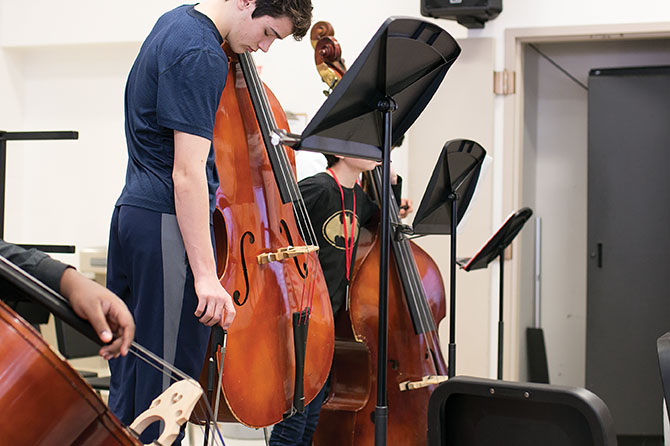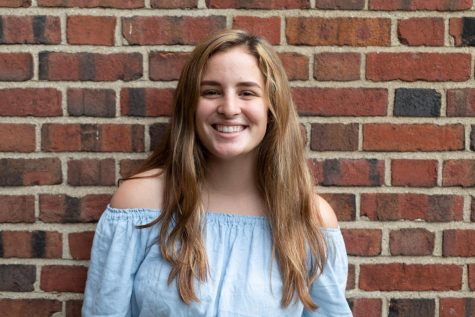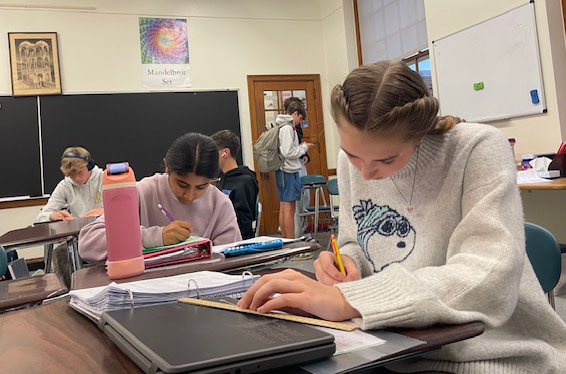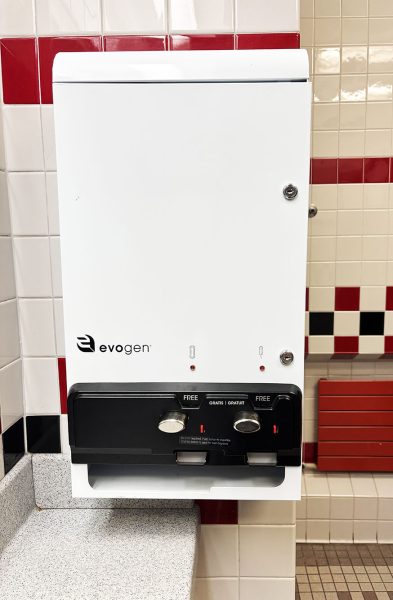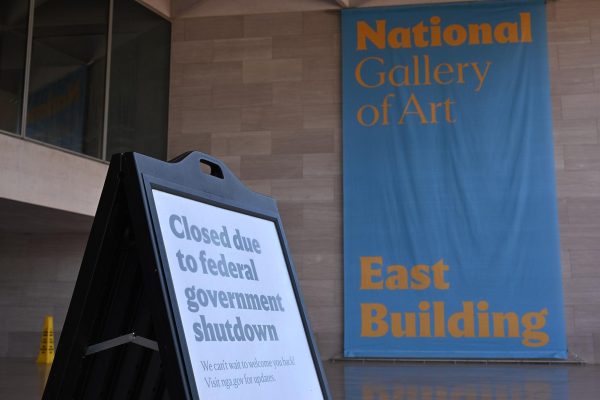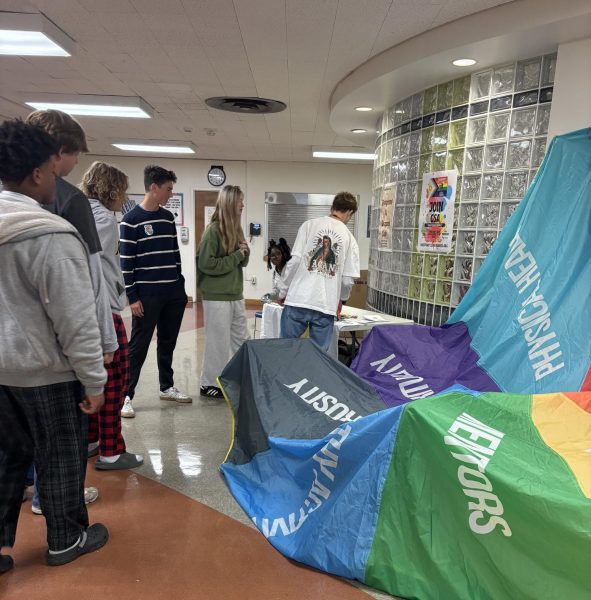New Opportunity Exposes New Talent
This year, novel instructional approach integrates novice musicians with experienced orchestral peers
When it comes to playing an instrument in the orchestra, the earlier you start, the better.
Shaker offers plenty of opportunities to those who participate in its band, orchestra and choir programs. There are trips abroad, and just last year, the Shaker orchestra earned third place at the Orchestra Cup National Orchestra Championship in New York City.
However, a persistent challenge for the band and orchestra programs lies in the years of experience required to participate. For a longtime Shaker student, this isn’t a problem. When students enter fifth grade at Woodbury, they are required to play an instrument. Their musical educations can continue through the middle school and then onto the high school with its award-winning bands and orchestras.
But for students who previously attended schools without music programs or required participation, the path to high school band and orchestra is less clear.
So, how do new students participate in Shaker’s band or orchestra? The answer in past years has been simple: They didn’t.
Orchestra teacher and Music Department Chairwoman Donna Jelen wanted to change this. “I knew that there were kids in the building who wanted to learn an instrument,” she said. “What I had found in previous years is, students who try to start in high school are at a real disadvantage because all the other kids have been playing for four or more years.”
Last year, with help from guidance counselors, Jelen proposed the creation of an opportunity for beginners to start playing an instrument at the high school. She has worked since to ensure its success.
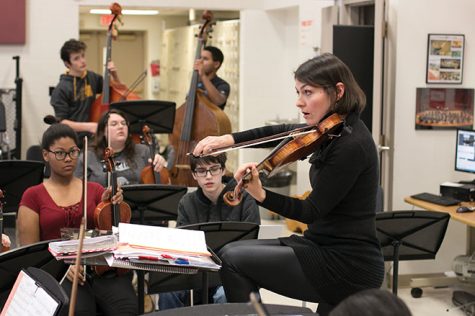
School counselor David Peake participated in the effort. “It was really a conversation within the guidance department when we met with Mrs. Jelen last year, to talk about the possibility of opening the course to students that have never played before,” he said.
“If you haven’t played before, you couldn’t come here and start playing an instrument. Until now. This is the first year that students have been able to do that.”
Jelen and the counselors originally wanted to offer the opportunity as a separate class, but the master schedule did not allow it. Having a blended class didn’t seem like it was going to work until Jelen realized she would mentor a student teacher this year. “If I have a student teacher, that’s two people in the room; it can work,” Jelen said. “The student teacher can start off the beginners and incorporate them into the class as they become ready.”
School counselors offered this new opportunity to students who had either expressed interest in the music program or who felt they would enjoy learning to play a new instrument.
“One of the things we’re pushing right now in the district is equity,” said Peake, who serves as co-chairperson of the district’s Equity Task Force. “I think that the program is a great demonstration of equity and how someone as accomplished as Mrs. Jelen can take time to work with beginners when she’s simultaneously working with students that have been playing since they could read.”
One of Jelen’s main worries is whether this opportunity will continue to be offered next year without the help of a student teacher.“Student teachers are assigned from music education programs at area colleges and universities. Once their students complete the coursework required to be eligible for student teaching, their schools work to match each student with an appropriate cooperating teacher in the area,” Jelen said. “There is no guarantee that I will have one next year — it just depends on whether the area colleges and universities with music education degree or certification programs have student teacher candidates who would match well with what I offer at Shaker.”
At the beginning of the school year, Jelen’s student teacher, Tori Petrak, took beginners into a separate room and began teaching them the basics during the ninth period String Orchestra class. As they progressed, the students joined the rest of the orchestra when they felt comfortable. At this point, every student has moved into the full orchestra.
“It was a great experience to have the opportunity to start beginners at the high school level. I think it’s rare to be able to offer that opportunity to students but also really amazing that we were able to,” Petrak said. “I’ve had experience teaching young beginners before, and some experience with high school musicians who have played for a long time, but this was new to me. Figuring out the best way to teach students with a wide range of musical backgrounds on three different instruments was challenging but also so much fun to be able to experiment until I found what worked best.”
High school students of all ages have taken advantage of this opportunity.
Senior Janelle Perrin, who already plays the piano, began the violin this year. “I feel like the piano and the violin go hand in hand together, so I wanted to learn how to play both,” she said. “Keeping up with the orchestra is the hardest challenge, but it’s getting easier.”
Lawrence Seizes Opportunities
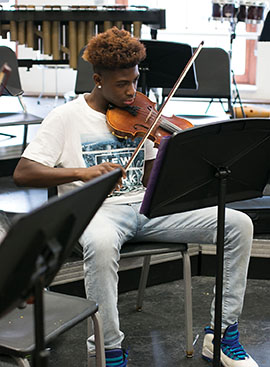
Freshman Dejonte Lawrence practices violin.
Dejonte Lawrence is a freshman who, like many other students, juggles his studies, sports and an instrument. However, unlike most members of the high school’s orchestra, he hasn’t been playing the violin since fifth grade.
Lawrence is one of 11 students learning to play a new instrument in the string orchestra this year. While some took this opportunity to learn how to play, other existing orchestra members used the opportunity to switch instruments.
Lawrence never played an instrument prior to high school, but was always interested in the sound of the violin. He was inspired by violinist Lindsey Stirling after watching her videos on YouTube. “I wanted to play like that,” he said.
Stirling, 31, performs a variety of music styles including classical and pop rock.
Lawrence also began playing football in middle school after transferring to Shaker schools in seventh grade. “I played football when I was younger, but that was my first time actually playing with a team, so that was pretty cool for me to learn how to play,” he said.
Lawrence said that learning to play football in middle school among more experienced players was discouraging, but he persevered. He hopes to secure a spot on the varsity team next season and play football at Ohio State, where he hopes to be recruited by the National Football League.
“After high school, you have to get a scholarship to college and play and then NFL recruiters come and see,” Lawrence said.
Because there was no novice instrumental program at the middle school to integrate him with the rest of the students, Lawrence didn’t have an opportunity to join the orchestra until this year. When he arrived, he took advantage of the opportunity provided by Jelen and school counselors.
When starting in the orchestra this year, Lawrence said he found it hard to draw support from his friends. Many of them believed starting the violin would be too difficult. However, Lawrence was persistent.
When he first started playing violin, the most difficult adjustment was learning how to use his left hand. “If you’re not left handed, it’s going to be hard,” he said. “The left hand plays the notes and strings, while the right hand holds the bow.”
Lawrence explained that the hardest skill for him to master is the vibrato. “You vibrate your finger on the string, and it makes a unique sound,” he said. “But it’s hard for me to do it since I’m a beginner.”
Petrak said Lawrence had an advantage when beginning the class. “He had told me that he had watched Lindsey Stirling play violin, and I think that watching another violinist before learning to play himself helped his posture and violin hold come more naturally to him,” she said. “He always had great questions and really wanted to learn more advanced skills he had seen other violinists do, like vibrato, which was awesome.”
Lawrence said that once Petrak taught them the basics, playing the instrument came naturally. He said, “I didn’t think I was going to learn to play the violin this easy or this fast.”

